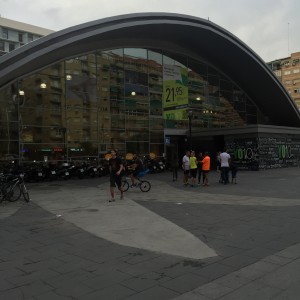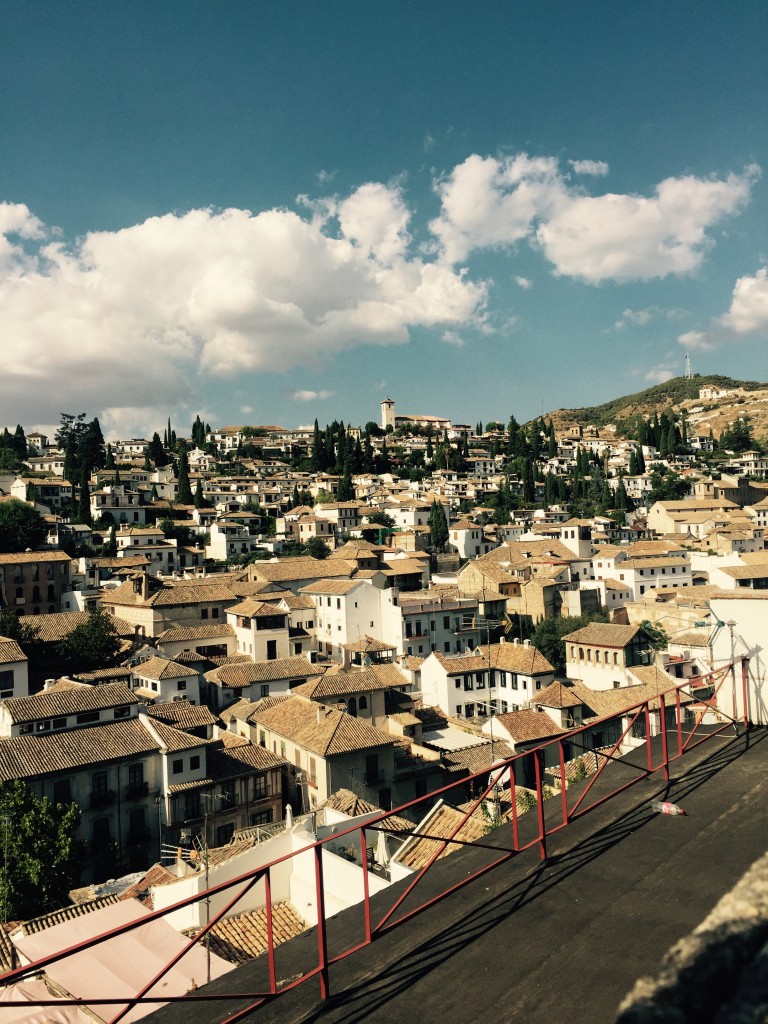It’s no secret that one of the biggest adjustments whenever coming to a foreign country is the difference in nutrition and how active that you are on a common day. You find that you have no chance to maintain exactly what you do in a normal day (eating/working out) in your new site, but that’s okay! You will find that it is far easier to adjust, and even improve your health while you are exploring the wild blue yonder.
Spain is famous for its meal times, and I can attest that it is really odd to get used to. On a normal day, you’ll have a small breakfast of breads at the normal American time (7a-10a). Lunch, however, is something that trips all American students. Typically, you eat a later lunch around 2p-4p, and it is a rather big lunch. You’ll find that you might be a bit hungrier during the 10a-2p break, but you can adjust quite fast as your stomach will adjust to the times, and if you need a bit of help, you can always bring a bit of breakfast with you to snack on.
Dinner is the most infamous difference from the US. Spaniards will typically eat around 9p, so you will have from 4p-9p without a meal. I find that I’m not actually that hungry during this break because lunch is so big! Dinner is a smaller meal as well, so it really balances with the big lunch. If you’re even hungrier after that, tapas (Spanish appetizers, free in Granada at most bars) are usually available with a drink until about midnight, and then shawarma restaurants are open until the morning. I find I usually eat the three meals a day and then the occasional tapas.
The food itself is even healthier than most diets in the United States. You might have a bowl of stew, a croquette platter, and then a postre (spanish dessert option of fruit, yogurt or sweets) for lunch, which is healthier than that hamburger and fries you might have in America. Also, the food portions are a lot smaller (but sometimes more filling!), so you aren’t really eating as much. Of course, there are options for eating junk food and sweets, but you find yourself seeking those out less because in most housing options, your host family or residence staff cook for you. As long as you watch yourself and make sure you aren’t going out for churros each night, you are most likely eating way better!
 |
| One of the Tapas - A bacon and cheese muffin. Free with drink! |
As for staying active, there really is no easier place. Granada is by far the most beautiful city that I’ve ever been in. There are TONS of running trails and even public exercise equipment! You could spend the entire semester running a new trail each day and still have a breathtaking view on each run. Coming from someone who has run across the city quite a bit, I recommend running in Parque García Lorca or up the hills of Realejo to the Alhambra (and through it’s beautiful surrounding gardens). If you prefer more of a gym environment, there is a gym almost every two blocks in Granada. The people love to work out. Many gyms will allow for international students, but I recommend YO10, a gym that is on Calle de la Ronda, as CEA is able to get you a free trial day to really explore its facilities (which are GREAT). Past that point you only need your passport and you’re good to go. The gym memberships in Granada are typically around 30 euros per month, which is a great rate. Even if you don't do any extra athletic training, you'll find that you walk way more to any destination than in the U.S.. I find myself almost tripling my daily walking count!
 |
| YO10 is actually built inside of an old train station! |
 |
| Parque García Lorca and its beauty. |
You may have originally started looking into study abroad to grow culturally and experience a new world, but you’ll also find that the cities might even let you experience a new, healthier you!
 |
| View from running up the hills of Realejo! |
Chase is the Fall 2015 CEA MOJO Blogger in Granada, Spain. He is currently a Senior at Southern Illinois University Edwardsville.







